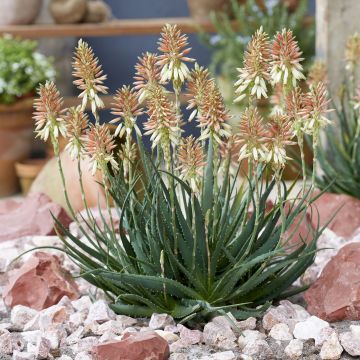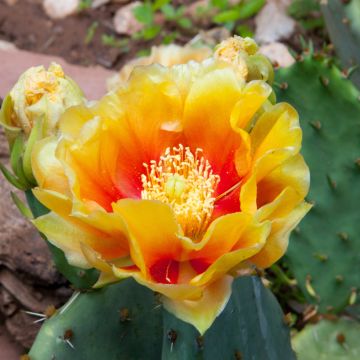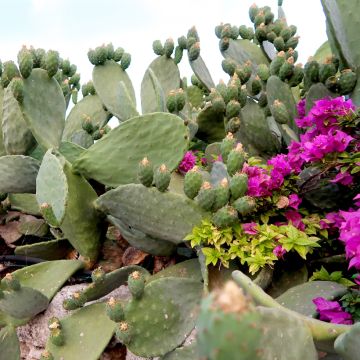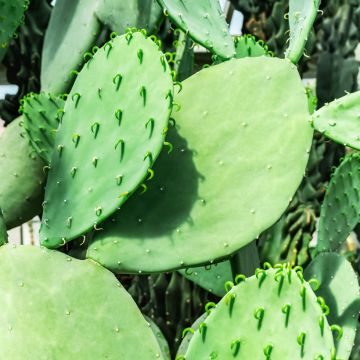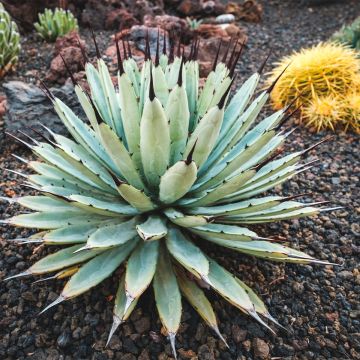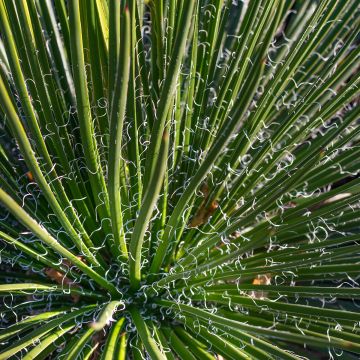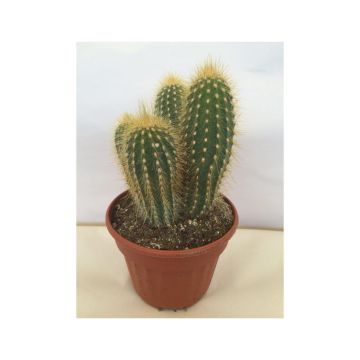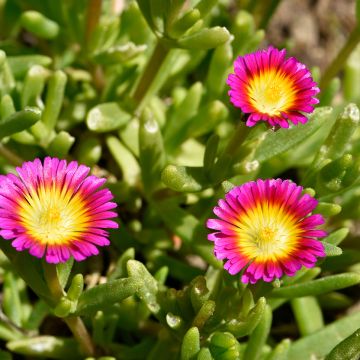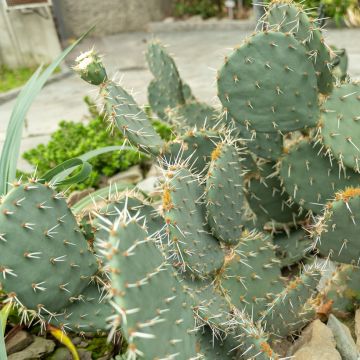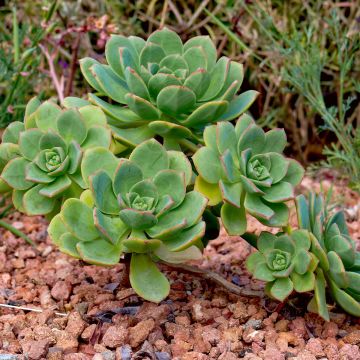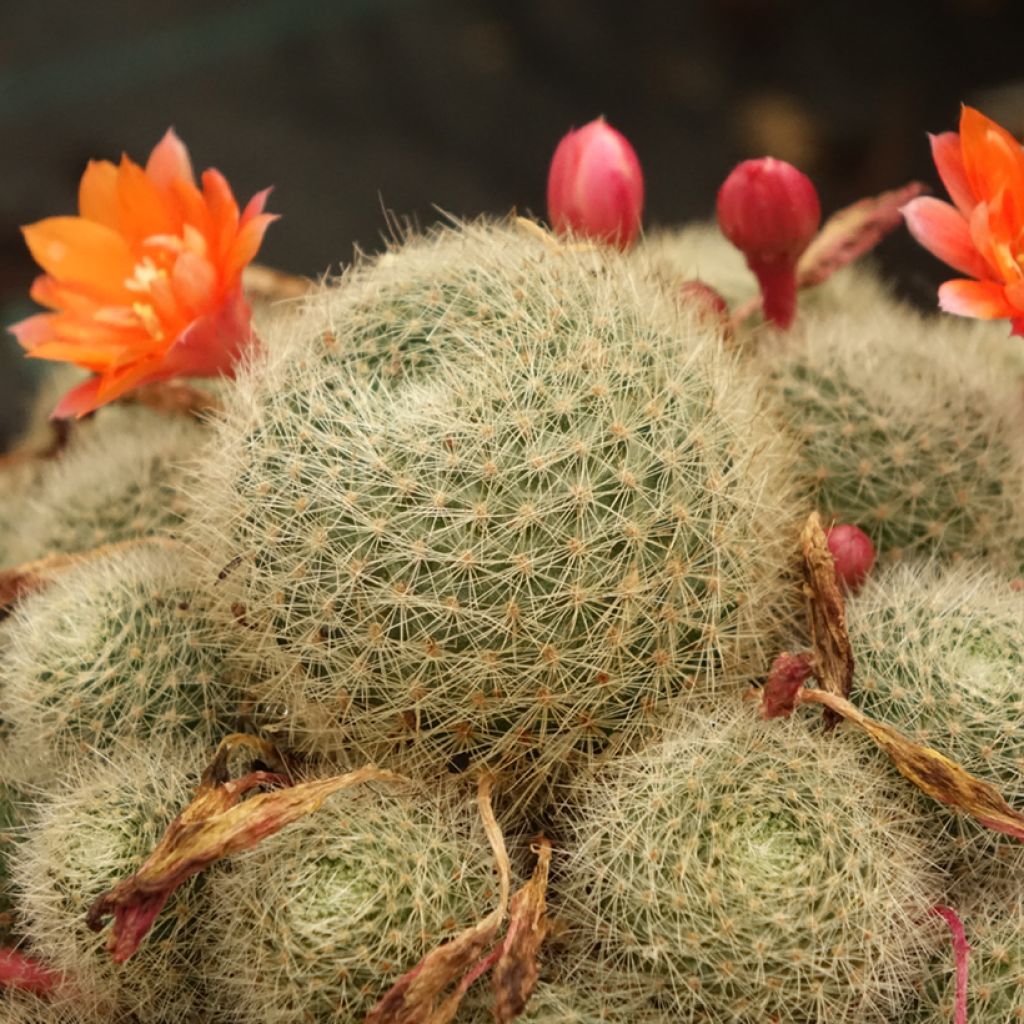

Rebutia sp.
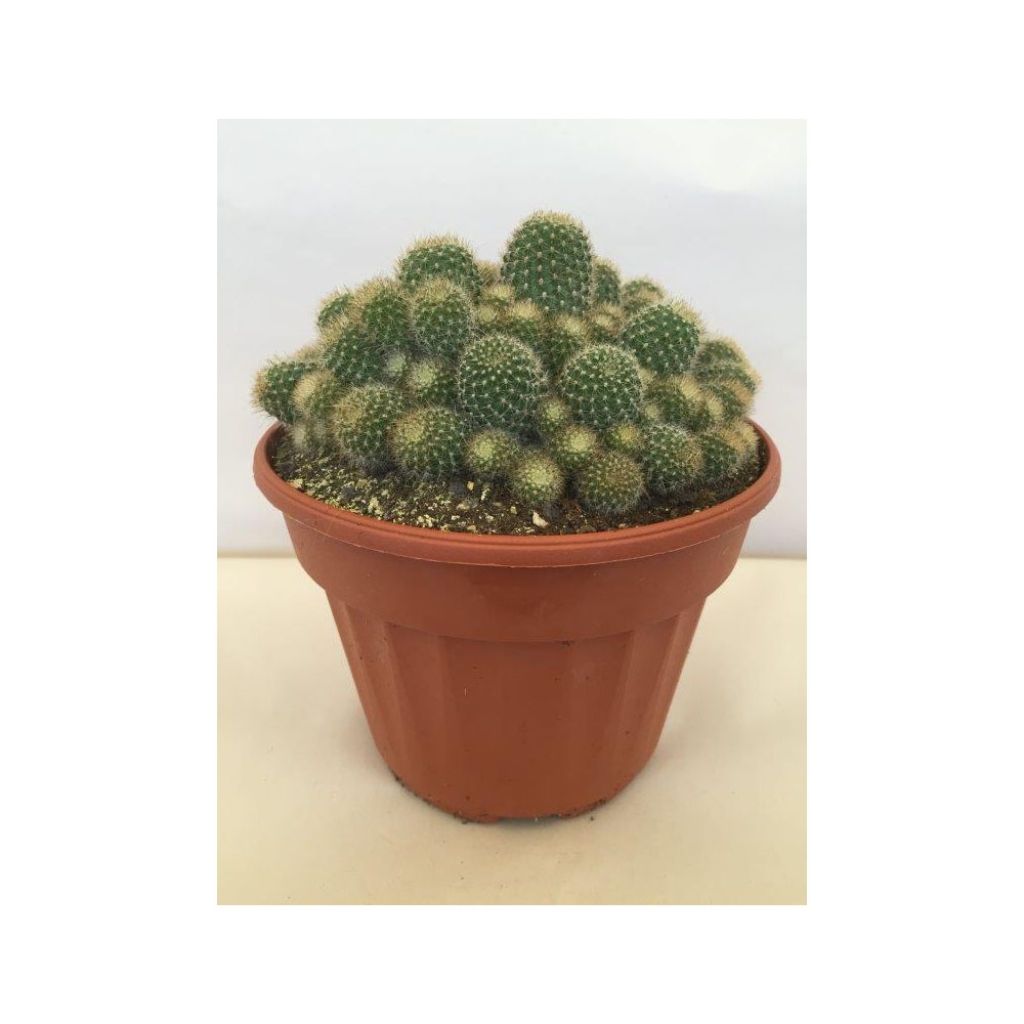

Rebutia sp.
Rebutia sp.
Rebutia sp.
Rebutia
This item cannot be shipped to the selected country
Delivery charge from €5.90
More information
Schedule delivery date,
and select date in basket
This plant carries a 12 months recovery warranty
More information
We guarantee the quality of our plants for a full growing cycle, and will replace at our expense any plant that fails to recover under normal climatic and planting conditions.
From €5.90 for pickup delivery and €6.90 for home delivery
Express home delivery from €8.90.
Does this plant fit my garden?
Set up your Plantfit profile →
Description
Imagine a colony of miniature spiky small projections covered with a carpet of huge pink, yellow, purple, orange or red flowers! Rebutia is a cactus native to South America, appreciated for its ease of cultivation and its large, abundant and brightly colored flowers in spring. This species forms small clumps with globular stems, featuring rhomboidal tubercles with small and fine, sometimes bristly, sometimes pressed prickles. Tolerating drought well, this cactus appreciates freshness throughout the year, essential for obtaining a beautiful flowering and should be cultivated in a pot to be stored in winter and protected from high temperatures in summer.
Rebutia encompasses around forty species of cacti native to Paraguay and Bolivia, belonging to the immense family of cacti. It is a plant that withstands drought well and can resist short freezes, especially if the soil is perfectly drained and dry. Unlike other common succulent plants, these species prefer coolness in both summer and winter. Grow them in a pot, in full sun or partial shade in a well-draining substrate, preferably sandy, composed of equal parts of soil, sand and compost. Outdoor cultivation in regions with mild winters is possible as long as they are protected from scorching temperatures and rain.
Rebutia species are very easy to cultivate as long as they are not exposed to extreme temperatures, cold or hot. They are succulent perennials with a globular habit, often cespitose. Small in size and slow-growing, they reach about 10 cm (4in) in all directions. Each stem is spherical to cylindrical, depressed at its apex and composed of spirals of rhomboidal or hatchet-shaped tubercles. Each tubercle bears acute radial and central pricks, thin and short or pressed like comb teeth against the cactus epidermis. From a young age, these plants flower in spring, offering surprisingly large flowers, often larger than the stems, in orange, red, pink, purple, white, yellow, appearing at different heights depending on the species.
Rebutia sp. should be planted in a pot that will be stored when the first cold weather arrives and watering should be stopped until the vegetation resumes in spring. It can be associated with other cacti such as echinocactus, ferocactus, astrophytum and mammillaries to create miniature desert gardens or it can be placed alone in a pot to decorate a windowsill or a corner of a veranda.
Report an error about the product description
Rebutia sp. in pictures
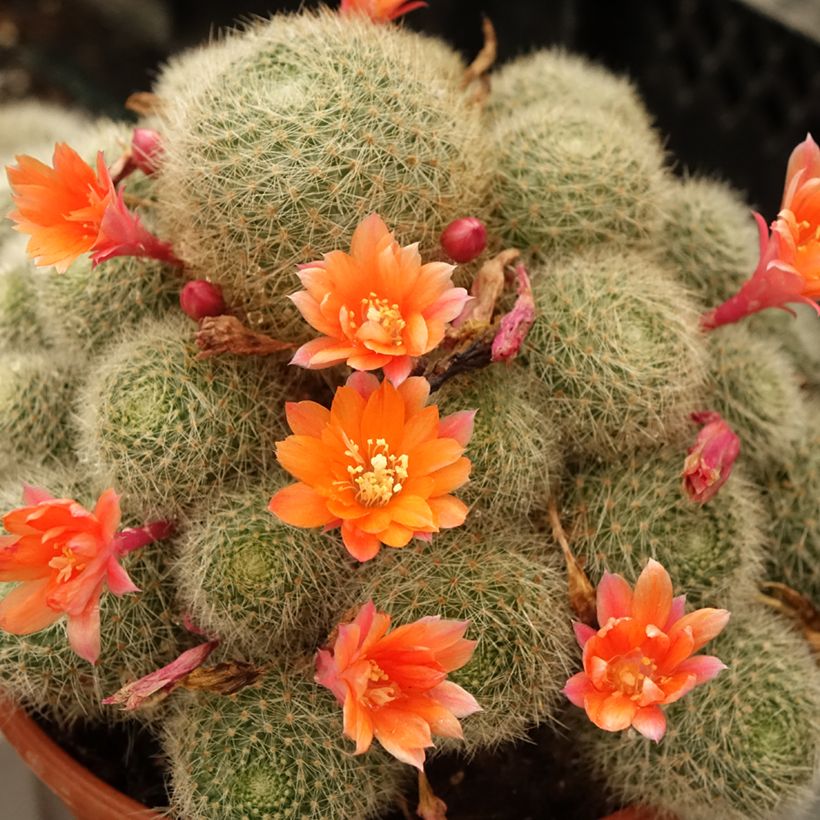

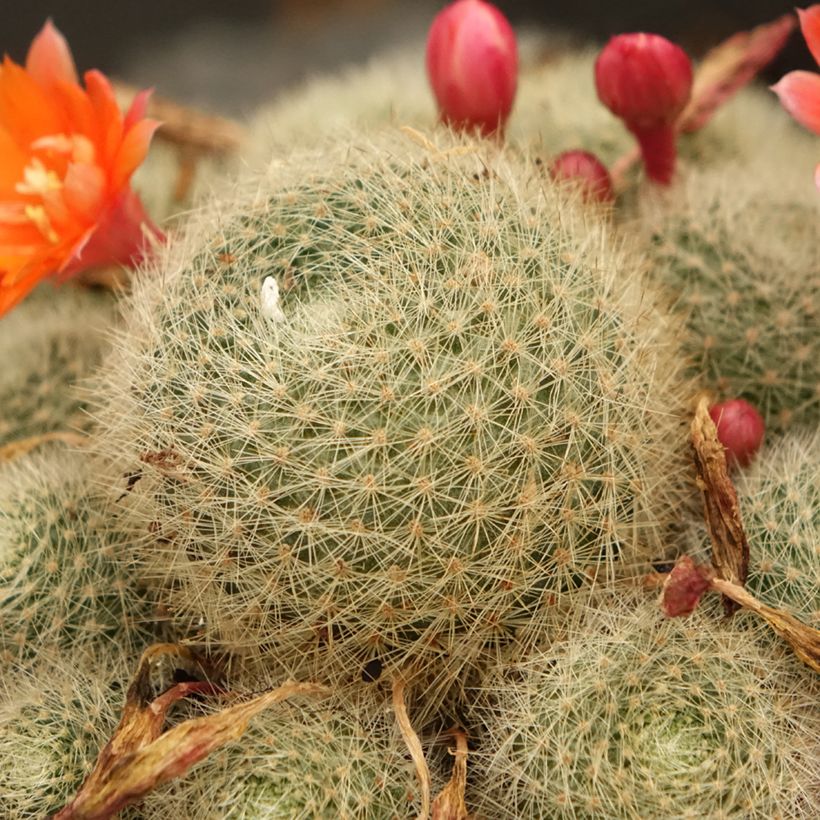

Flowering
Foliage
Plant habit
Botanical data
Rebutia
sp.
Cactaceae
Rebutia
North America
Other Cacti and succulents
Planting and care
Plant the Rebutia sp. in full sun or partial shade in a light, well-draining, sandy to loamy soil. Frost-sensitive, it tolerates low negative temperatures except for short freezes in dry and perfectly drained soil. Resistant to drought, this plant thrives in coolness rather than heat, unlike many other succulent plants. Avoid scorching exposures and high temperatures, with 25 °C being the ideal temperature for cultivation in summer. Cultivate it in a pot with an equal mixture of garden soil, compost, and sand. Keep it dry throughout the winter in a bright room with a minimum temperature of 4 °C and a maximum of 10 °C. Outdoors on a balcony, for example, protect it from excessive rains that will cause it to rot. Excessive humidity in winter can also greatly reduce the hardiness of this plant. Water sparingly from March to October.
Planting period
Intended location
Care
This item has not been reviewed yet - be the first to leave a review about it.
Haven't found what you were looking for?
Hardiness is the lowest winter temperature a plant can endure without suffering serious damage or even dying. However, hardiness is affected by location (a sheltered area, such as a patio), protection (winter cover) and soil type (hardiness is improved by well-drained soil).

Photo Sharing Terms & Conditions
In order to encourage gardeners to interact and share their experiences, Promesse de fleurs offers various media enabling content to be uploaded onto its Site - in particular via the ‘Photo sharing’ module.
The User agrees to refrain from:
- Posting any content that is illegal, prejudicial, insulting, racist, inciteful to hatred, revisionist, contrary to public decency, that infringes on privacy or on the privacy rights of third parties, in particular the publicity rights of persons and goods, intellectual property rights, or the right to privacy.
- Submitting content on behalf of a third party;
- Impersonate the identity of a third party and/or publish any personal information about a third party;
In general, the User undertakes to refrain from any unethical behaviour.
All Content (in particular text, comments, files, images, photos, videos, creative works, etc.), which may be subject to property or intellectual property rights, image or other private rights, shall remain the property of the User, subject to the limited rights granted by the terms of the licence granted by Promesse de fleurs as stated below. Users are at liberty to publish or not to publish such Content on the Site, notably via the ‘Photo Sharing’ facility, and accept that this Content shall be made public and freely accessible, notably on the Internet.
Users further acknowledge, undertake to have ,and guarantee that they hold all necessary rights and permissions to publish such material on the Site, in particular with regard to the legislation in force pertaining to any privacy, property, intellectual property, image, or contractual rights, or rights of any other nature. By publishing such Content on the Site, Users acknowledge accepting full liability as publishers of the Content within the meaning of the law, and grant Promesse de fleurs, free of charge, an inclusive, worldwide licence for the said Content for the entire duration of its publication, including all reproduction, representation, up/downloading, displaying, performing, transmission, and storage rights.
Users also grant permission for their name to be linked to the Content and accept that this link may not always be made available.
By engaging in posting material, Users consent to their Content becoming automatically accessible on the Internet, in particular on other sites and/or blogs and/or web pages of the Promesse de fleurs site, including in particular social pages and the Promesse de fleurs catalogue.
Users may secure the removal of entrusted content free of charge by issuing a simple request via our contact form.
The flowering period indicated on our website applies to countries and regions located in USDA zone 8 (France, the United Kingdom, Ireland, the Netherlands, etc.)
It will vary according to where you live:
- In zones 9 to 10 (Italy, Spain, Greece, etc.), flowering will occur about 2 to 4 weeks earlier.
- In zones 6 to 7 (Germany, Poland, Slovenia, and lower mountainous regions), flowering will be delayed by 2 to 3 weeks.
- In zone 5 (Central Europe, Scandinavia), blooming will be delayed by 3 to 5 weeks.
In temperate climates, pruning of spring-flowering shrubs (forsythia, spireas, etc.) should be done just after flowering.
Pruning of summer-flowering shrubs (Indian Lilac, Perovskia, etc.) can be done in winter or spring.
In cold regions as well as with frost-sensitive plants, avoid pruning too early when severe frosts may still occur.
The planting period indicated on our website applies to countries and regions located in USDA zone 8 (France, United Kingdom, Ireland, Netherlands).
It will vary according to where you live:
- In Mediterranean zones (Marseille, Madrid, Milan, etc.), autumn and winter are the best planting periods.
- In continental zones (Strasbourg, Munich, Vienna, etc.), delay planting by 2 to 3 weeks in spring and bring it forward by 2 to 4 weeks in autumn.
- In mountainous regions (the Alps, Pyrenees, Carpathians, etc.), it is best to plant in late spring (May-June) or late summer (August-September).
The harvesting period indicated on our website applies to countries and regions in USDA zone 8 (France, England, Ireland, the Netherlands).
In colder areas (Scandinavia, Poland, Austria...) fruit and vegetable harvests are likely to be delayed by 3-4 weeks.
In warmer areas (Italy, Spain, Greece, etc.), harvesting will probably take place earlier, depending on weather conditions.
The sowing periods indicated on our website apply to countries and regions within USDA Zone 8 (France, UK, Ireland, Netherlands).
In colder areas (Scandinavia, Poland, Austria...), delay any outdoor sowing by 3-4 weeks, or sow under glass.
In warmer climes (Italy, Spain, Greece, etc.), bring outdoor sowing forward by a few weeks.

































